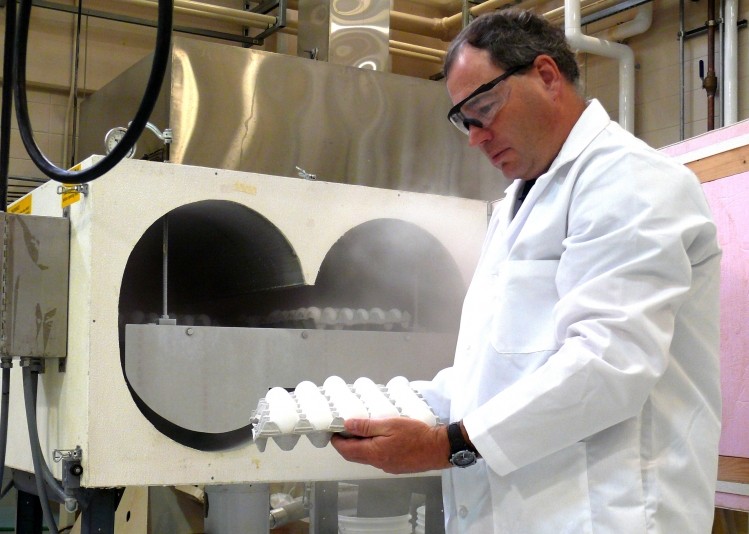‘Unique’ rapid egg cooling system to cut salmonella risk, extend shelf life

Associate professor Kevin Keener, of Purdue University in Indiana, said the fast cooling of eggs after laying and processing would “significantly reduce the ability of salmonella to grow inside the egg and potentially keep consumers from becoming sick”.
Egg recall
The US is currently enacting a recall of at least half a billion eggs as people have been sickened by salmonella across the country.
Keener was quick to point out that ‘natural contamination’ from shell eggs was relatively rare and the current problems were more likely to have arisen because of sanitation failures within the processing environment.
"There is a big discussion right now about how food safety in the US is regulated and cooling eggs is part of that debate," he told FoodProductionDaily.com.
Six days
Federal guidelines on how quickly eggs should be cooled do not currently exist – but Keener pointed out that under present industry practices, it can take up to six days for eggs to cool to 45F (7C) – the temperature at which salmonella can no longer grow.
Keener said eggs can be more than 100 F (38 C) after washing and packaging in cartons. Thirty dozen eggs are then packed in a case, and 30 cases are stacked onto pallets and placed in refrigerated coolers. The eggs in the middle of the pallet can take up to 142 hours to cool to 45 F degrees. He said scientists estimate that one in about every 20,000 eggs has salmonella naturally inside.
"The eggs in the middle of a pallet may take up to six days to cool, and if the one in 20,000 that has salmonella is in the middle, the bacteria will grow," Keener said. "In reality, some eggs don't cool to 45 degrees until they're in the refrigerator in your home."
Salmonella reduction
By contrast, the food safety expert said the rapid cooling technology he and colleagues have been developing and refining over the past dozen years takes just 90 seconds.
“Studies from the Food and Drug Administration (FDA) show that if eggs were cooled and stored at 45 degrees or less within 12 hours of laying, there would be an estimated 78 per cent fewer salmonella illnesses from eggs in the United States each year,” he added.
He said he believed his system was unique but added alternative solutions had been developed.
Commercialisation
Keener said the system could be easily adapted for large-scale egg production and he is seeking a commercial partner to enable him to do this. He estimates treatment with the technology would cost between two and five cents per dozen eggs for a large producer but would not slow processing speeds and result in a near-doubling of egg shelf life.
“The technology extends shelf life from the basic 6-8 weeks to 12-15 weeks depending on how the eggs are stored,” said Keener. “This extension would make the process commercially viable as the shelf life would be such that producers would have the potential to export.”








